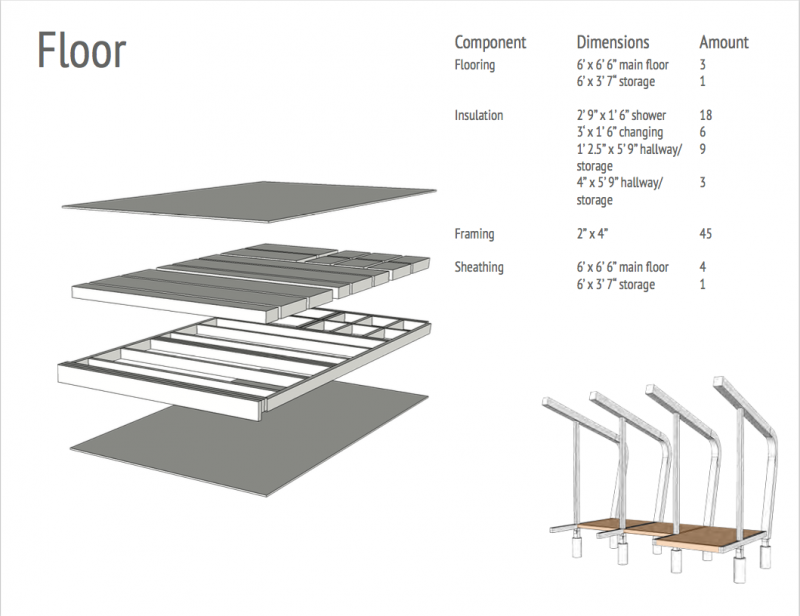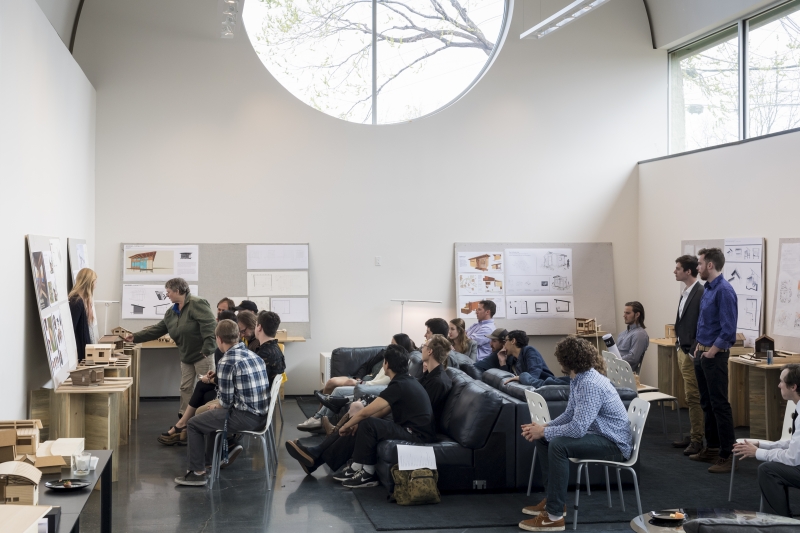Inside a Design/Build Studio Semester with SketchUp
Jade Polizzi is a Senior Instructor with the University of Colorado at Boulder Program in Environmental Design. Each spring, students in her design/build studio class collaborate on a hermitage cabin to be built on the grounds of the Lama Foundation’s retreat centre near Taos, New Mexico. This semester SketchUp caught up with Jade and her class to learn about how today’s design students are utilising SketchUp and LayOut to solve real world design challenges.
Jade, you are tasked with the job of training the next generation of industrial designers, architects, and outside-the-box thinkers. What are some of the challenges of working with students so new to the design field?
The primary challenge is that this is a real project that needs to be completed on time and within budget. Most students haven’t been part of a project from start to finish so they struggle to understand all the steps necessary to bring a design from inspiration to completion. We use many different tools for communication: scaled drawings, physical models, computer models, and even life size layouts to best understand the space and all of the processes that are necessary to understand when constructing the building. Having seventeen-to-twenty designers on a project can make it difficult to find a cohesive style but the benefit of having so many designers on such a small project is that we can investigate many ideas and develop beautiful details that enhance the design concept.
Can you tell us a little bit more about the collaboration between the CU ENVD dept and the Lama foundation?
The partnership between the ENVD and Lama Foundation began in 2013 when we shifted our curriculum to incorporate a Praxis Semester, where students apply their design knowledge and work with a local or regional partner with a stated need. The Lama Foundation is a 50-year-old community oriented retreat center in northern New Mexico. The Lama Foundation’s mission for creating a peaceful and sustainable environment aligns well with the philosophies of University of Colorado’s Environmental Design program.
What type of classroom preparation is necessary to get your students ready for the task of modelling to a constructable level of detail in SketchUp?
Our students have taken a building materials class prior to our semester and they are already familiar with many computer applications for the design profession. Typically they have used SketchUp as a massing tool. One of our assignments is for them to model each material that will be used in the building, 2 x 6’s, sheathing, windows, etc., as a component and to submit a booklet of all the parts and pieces that will be necessary to complete the structure. We call this assignment the Lego project because it creates a sort of manual for construction.

What is the process for determining which design you move forward with for your final project?
Each student spends about nine weeks designing a structure that fits the programmatic needs of that year’s project. Students design the form, the circulation sequence, investigate the intended materials and develop concepts for the furniture. Our clients, community members of the Lama Foundation, then visit Boulder to discuss the designs. They choose three-to-four projects that they bring back to the remainder of the community where a final form is chosen.
